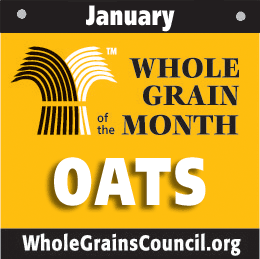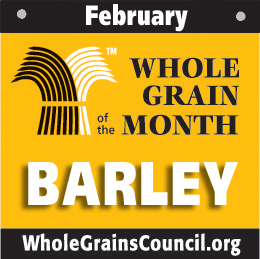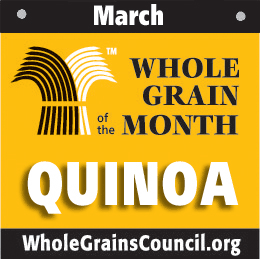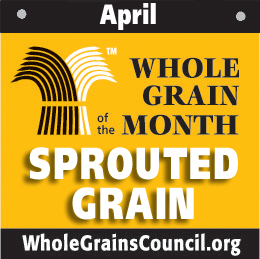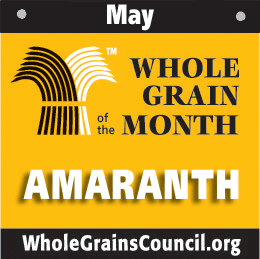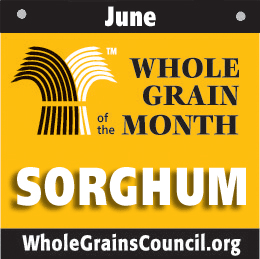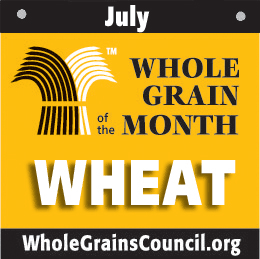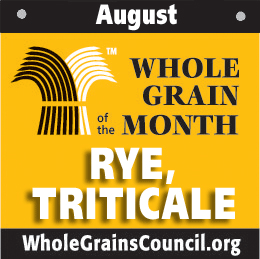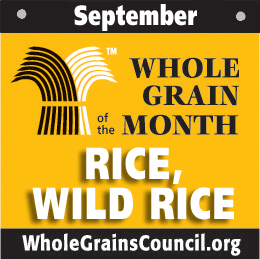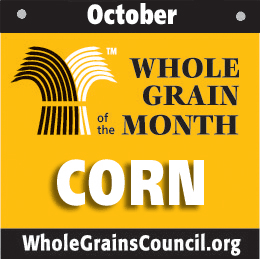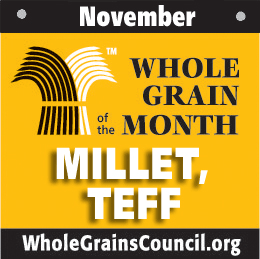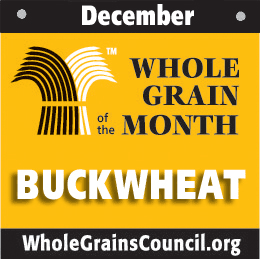Want an easy way to explore the world of whole grains? Each month the Whole Grains Council celebrates a different whole grain, and you can join in by trying something new each month. Here’s the line-up for each grain:
January: OatsJanuary has long been celebrated as Oatmeal Month. It’s a time when residents of the Northern Hemisphere, in the deep of winter, turn to the comforts of hot cereal at breakfast, and oatmeal is in its prime. Learn more… |
|
February: BarleyBarley is one of the world’s earliest cultivated grains, appearing in traditional diets across the globe. Barley has one of the highest levels of fiber in all whole cereal grains and contains high levels of betaglucan fiber that can help to control blood sugar and reduce the risk of heart disease. Learn more… |
|
March: QuinoaTwenty years ago, not many people would have been able to recognize, much less be able to pronounce the name of this tiny pseudo grain from the Andes. Fast forward to today, when quinoa can be easily found in most grocery stores grain aisle. Quinoa is a complete protein, one of the only plant foods offering all nine of the essential amino acids the human body needs in a healthy balance. We set aside every March to celebrate this ancient protein powerhouse Learn more… |
|
April: Sprouted GrainsWe’re taking a slight departure this month, to recognize the intriguing nutritional advantages of sprouted grains. As with any living thing, a grain goes through some drastic changes when it starts to grow. The biochemical changes that take place impact macro- and micronutrients, making most of them more bioavailable – both for the budding plant and for us. Learn more… |
|
May: AmaranthAmaranth makes up for what it lacks in size and perhaps recognition by packing a nutritional punch. Sometimes called the “food of immortality” by the Aztecs, this resilient and visually striking plant has recently gained popularity in the health food scene Learn more… |
|
June: SorghumSorghum’s global importance is largely due to its natural drought tolerance and versatility as a crop. In Africa and parts of Asia, sorghum is primarily grown for human consumption while in the United States it is used mainly for livestock feed and ethanol production. Consumer knowledge of sorghum is on the rise with the increasing popularity of plant-based and gluten-free foods, and those trying it are loving what they have found so far.Learn more… |
|
July: WheatWhile wheat may seem commonplace and basic to our modern eyes, its past is intertwined with the birth of agriculture itself, and its future intrinsic to the continued development of our global agricultural systems. Learn more… |
|
August: Rye and TriticalePerhaps better known for its use in whiskeys and by deli counters in the United States, rye has long played an important role in colder temperate countries where it was too cold or wet for wheat to grow dependably, and is used as a key ingredient in the fragrant, dense, and nutritious loaves celebrated in these regions. Learn more… |
|
September: Rice and Wild RiceFor two decades, September has been recognized as Rice Month, and we’re continuing that tradition. Though it’s not actually a kind of rice, Wild Rice is also celebrated in September, a time when this uniquely American whole grain is harvested, and when the wild rice fields offer sustenance and repose to flocks of migrating birds. Learn more… |
|
October: Corn (including Popcorn)Corn started as a small, semi-tropical grass, but the intervention of numerous human cultures over a period of more than 9000 years has transformed it into one of the most prevalent grain crops in the world. Today the crop is adept to growing in cooler climates and provides for about 21 percent of human nutrition across the globe. Learn more… |
|
November: Millet and TeffThough millet may be a lesser known ancient grain, it is considered one of the world’s oldest cultivated crops. The term ‘millet’ does not refer to a single type of grain, rather to a group of annual, small seeded grasses – including teff. Millets are impressive, hardy cereal crops that are low maintenance and drought resistant, thriving in semiarid environments. Learn More… |
|
December: BuckwheatBuckwheat is one of the six pseudo grains that are not part of the Poaceae cereal family but are considered grains due to their similar uses from a culinary and nutritional perspective. Buckwheat has a wonderfully robust flavor, welcoming comparisons to hops and hinting at a bit of rose petal on the nose. Currently, buckwheat is on trend with bakers but has a rich history in Asia and in Eastern Europe. Learn more…
|

